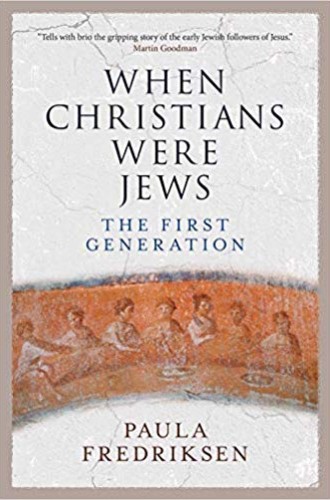Jesus’ earliest followers were Jewish, too
Paula Fredriksen challenges popular assumptions about the first generation of Christians.
The first generation of Jesus’ followers were Scripture-reading Jews who believed that Jesus’ life, death, and resurrection were fulfillments of prophetic predictions that a messiah would one day appear upon the earth, and that his arrival would herald the coming end time. These early devotees of Jesus faced pressing questions about their relationship with fellow Jews who rejected the notion that Jesus was the long-awaited Messiah. Would Jesus’ falling-out with Pharisees, Sadducees, and other Jews affect their relationship with these Jews? Even more pressingly, should Jesus’ followers expect gentile newcomers to their community to live squarely within the Jewish community by adopting Jewish rituals such as circumcision and the observation of dietary laws?
As these questions were being hotly debated through the second half of the first century, most of Jesus’ followers viewed themselves as devout Jews. Even disciples like Paul, who insisted that gentiles were not obligated to observe Jewish laws, did not perceive the followers of Jesus as an entity that existed outside of Judaism. While later church fathers would depict Christianity and Judaism as orbiting outside of and in tension with one another, these religious communities remained intertwined until at least the fourth century. The interconnectedness of Christianity and Judaism came to an end only after Constantine legalized Christianity and Christian bishops began to assemble councils with the intention of constructing a uniform Christian doctrine.
Increased sensitivity to the fact that Christianity did not split from Judaism immediately following Jesus’ death has propelled scholars to dig beneath the surface of ancient texts to better understand what lay at the core of Jesus’ debates with his Jewish interlocutors. Their work has provided an important corrective to the traditional presumption that Jesus worked against first-century Jewish life rather than within it. More recently, scholars have begun to emphasize Paul’s Jewish identity, challenging the long-standing notion that Paul was the law-hating, gentile-befriending apostle that many have taken him for.





